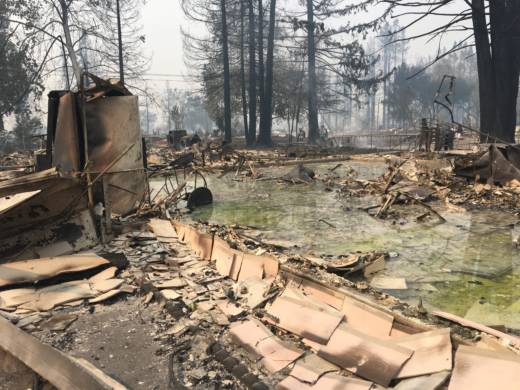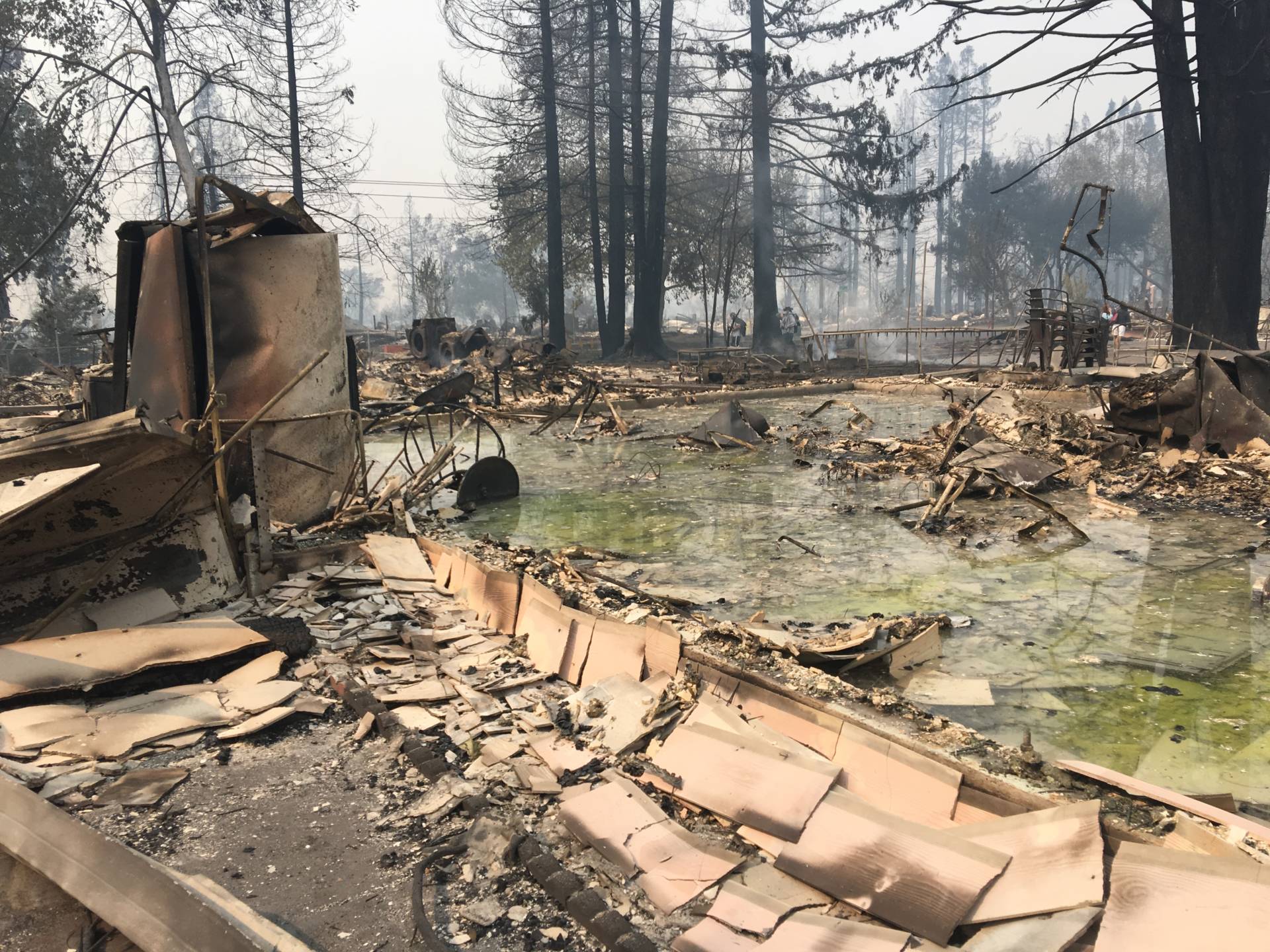About a week and a half ago shouting broke out at a town hall meeting in Santa Rosa, as fire survivors’ frustration and confusion about what to do with the remains of their burned-out homes bubbled over.
Many displaced homeowners are struggling to find a place to sleep at night, dealing with trauma and trying to keep a job. Now they also face a huge decision that will affect their families and their ability to rebuild. That decision: to opt into the government-run debris removal program or opt out and hire their own private contractor to do the cleanup.
The wildfires in Northern California burned through buildings, trees, washing machines, refrigerators, beds and TVs — leaving a giant hazardous mess in their wake. Cleaning up the mess is a massive project that could take months to complete and cost taxpayers upward of $180 million. And it is complicated by the potentially conflicting interests of the homeowners, insurers and government agencies involved.
To handle this unprecedented cleanup project, the state turned to the federal government for help. The debris removal program for Lake, Mendocino, Sonoma and Napa counties is being run by the Army Corps of Engineers and managed by ECC, a contractor. Costs not covered by insurance will be paid for by FEMA.
County leaders are anxious to maximize the resources offered by the federal government and get the cleanup underway as quickly as possible, not just because it’s the first step to recovery, but also because they are facing an environmental and public health crisis. Much of the debris left behind by the wildfires is toxic, and there are fears that heavy rains could spread the debris and pollute the groundwater.


